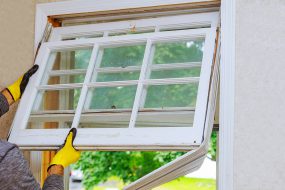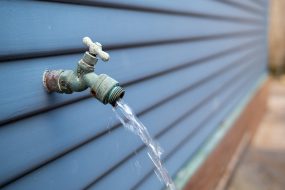At a glance
Lead exposure is not limited to children from certain racial and ethnic minority groups, those who come from households with lower incomes, or those who were born outside of the United States or live with an adult who works with lead. Learn more about how to talk to healthcare providers to find out if your children are at risk for lead exposure and if a blood lead test is needed.

Sources
Below are some real-world examples of situations where children have been exposed to lead.
Lead in soil
CDC currently uses a blood lead reference value of 3.5 micrograms per deciliter (µg/dL) to identify children with higher levels of lead in their blood than most children. Karla's son was diagnosed with a blood lead level of 11 µg/dL at age 1, and she could not pinpoint the source of lead exposure.
"The house was recently painted, and there were no obvious lead hazards. There were some small bare soil areas in which my son would play but nothing too overwhelming. I had my soil tested and the samples came back less than 400 ppm—the standard for a child's outdoor play area. But a child like my son, who eats dirt and puts everything in his mouth, was exposed repeatedly to low levels of lead, which can build up in his body."

Sapling planted in soil with grass and soil surrounding it
Learn more about lead in soil as a potential source of lead exposure.
Kitchen renovation
"We had a full kitchen renovation done that resulted in lead dust ... I am concerned about my daughter's lead level test due to any possible intake."

John's daughter was tested for lead exposure, and the test result revealed she had lead in her blood.
No safe blood lead level in children has been identified. Hire contractors for renovations who are trained in lead-safe practices. Visit the EPA website to locate a certified contractor.
Old kitchen sink
Laura, a parent of young children, was concerned about the presence of lead in their older home.
"I just swabbed my old barn style kitchen sink, and it came back positive for lead. The sink is wearing away, so the porcelain paint is chipping off. I'm afraid it will go onto dishes and cups we all eat and drink from."

If your child is exposed to lead, get them tested and talk to your healthcare provider about recommended services.
Window replacement
Colleen hired a company to replace the windows in her house. Her family returned to find several leftover paint chips in and around the house. Colleen knew there was lead paint in her house since it was built in 1924.
"The company that did our windows took ZERO precautions for lead and didn't give us the handout for lead levels in children ... I called our pediatrician immediately. They took blood samples from the kids and advised us to get out of the house until the lead risk was gone."

If your children have been exposed to lead, contact their healthcare provider to get them tested and determine the next steps.
Swimming pool
A lead inspection was conducted for a family after both children had high blood lead levels. After testing in and around the house, it was discovered the source of lead exposure was the scuba weights used to hold down the filter lines in the family's swimming pool.
"Children accidentally swallowing lead-contaminated water from the family's wading pool over a 2–3 week period may have harmed children's health because of the high lead concentration in the pool water."

Sometimes it can be difficult to find sources of lead exposure. Hire a lead inspector to identify sources of lead exposure. To locate a certified lead inspector, visit the EPA website.
House paint renovation
Steve recently hired a company to paint his house.
"I was told that they would sand blast all the old paint off and clean it up. They did not do a very good job in cleaning up the paint chips, and now I'm worried about the paint chips left around my house ..."

Lead-based paints were banned for residential use in 1978. Home repairs and renovations, such as sanding or scraping paint on the inside and outside of homes built before 1978, can release lead dust. Children can be exposed if they eat flaking paint chips or eat or breathe in lead dust.
Toy lending library
A nonprofit organization operates a toy lending library for families of children with special needs. One staff member reported a family told them a toy they borrowed tested positive for lead.
"Many of our children do put toys in their mouths."

Lead can be found in products such as toys and jewelry.
Brass faucet
Jennifer read in a public health notice that brass faucets may contain lead.
"Does that mean that watering the grass or plants using a brass faucet will cause a lead hazard?"

Jennifer was concerned that the water from her hose could contaminate her yard's soil and get tracked into her home. Children can be exposed to lead by swallowing or breathing in lead-contaminated soil or dust brought into their home from outside.
Your local water authority is your best resource for testing and identifying lead in your tap water. Learn more about lead in drinking water.
Lead in a toy set
Laura N. received a recall notice from an online retailer about her son's toy set containing lead.
"I purchased a set of plastic action figures for my 11-year-old son. Unfortunately, the toy set was recalled because it contained lead. Knowing my son's toy set contained lead was unsettling."

If your child has been exposed to lead, follow up with their healthcare provider.
Learn more about childhood lead poisoning prevention.
PDF versions
Downloadable PDF version of this fact sheet.
All Children Can Be Exposed to Lead
Printable flyers
